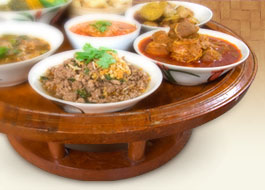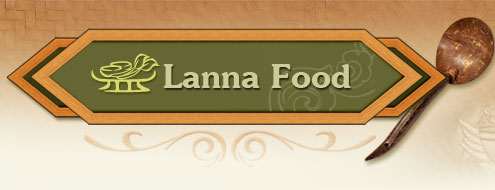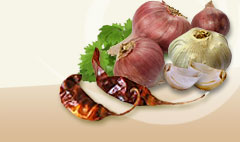Pepper |
|
|
 | Piper nigrum L. Ex C |
|
| |
 | Piperaceae |
|
| |
 | Pepper |
|
| |
 | Phrik noi, ho-chia (Chinese) (Wut Wuthithamwet, 1997, p. 314; Kanchana Diwiset, et al., 1997, p. 165) |
|
| |
 | Perennial climber, green, fertile branches erect, approximately 5 m. high. Roots (tiers) are put out around nodes to hold the plant on the trellis or other plants. Leaves simple, alternate, ovate, 8-16 cm. long, 4-7 cm. wide, acuminate, grayish green under side and dark green upper side. Inflorescence of cylindrical spikes, with deoecious flowers, 10 cm. long, white. Berries round, clusters, cylindrical, green when young and yellow or red when mature with individual green seeds inside. (Kanchana Diwiset, et al., 1999, 165). In Thailand, it is grown mostly on the eastern coast of Chantaburi and Trat and later it was also cultivated in Trang Province in the South, known as phrik Thai trang among the European merchants during the reign of King Rama II (Thawithong Hongwiwat, 2004, 168) White pepper and Black pepper come from the same variety with the difference being in the process. White pepper is the kind whose shell is taken off whereas black pepper is the dried mature (orange or red) pepper with the shell after being dried 3 days in the sun until it turns black. White pepper is made from mature yellow pepper being piled together and covered with burlap sack and allowed to ferment for 2-3 days before soaking in water for a week to completely remove the shell. After that the seeds are washed clean and dried in the hot sun for 3-4 days. (Thawithong Hongwiwat, 2004, p. 168) |
|
| |
 |

No information on nutrition available. Young seeds are used in all kinds of spicy stir fried dishes. Mature seeds are dried and used as spices. (Kanchana Diwiset, 1999, p. 165) Lanna people use black pepper in chili paste for lap. (Prathan Nanchaisin, personal communication, July 3, 2007) |

Leaves have a spicy hot taste for relieving a stuffy feeling or upset stomach.
Flowers are spicy hot, too and are good to treat red eye due to high blood pressure.
Seeds are good for upset stomach, stuffiness and used as an expectorant, as well as in tonics.
Vines are good as an expectorant.
Roots also have a spicy hot taste and are good for relieving wind, dizziness and indigestion. (Kanchana Diwiset, et al., 1999, p. 165; Wut Wuthithamwet, 1997, p. 314)
|
|
| |
 | Rainy season (Kanchana Diwiset, et al., 1999, p. 165) |
|
| |
 |
Kanchana Diwiset, et al., comp. (1999). Phak Phuen Ban Phak Klang. Kanchana Diwiset, editor. Nonthaburi: Project For Text Development on Traditional Thai Medicine. (in thai). Thawithong Hongwiwat. (2004). Vegetable Encyclopedia. (2nd ed.). Bangkok: Saeng Daet. (in thai). Wut Wuthithamwet. (1997). Saranukrom Samunphrai: Ruam Lak Phesatchakam Thai. Bangkok: Odean Store. (in thai). |
|
| |
|
|




